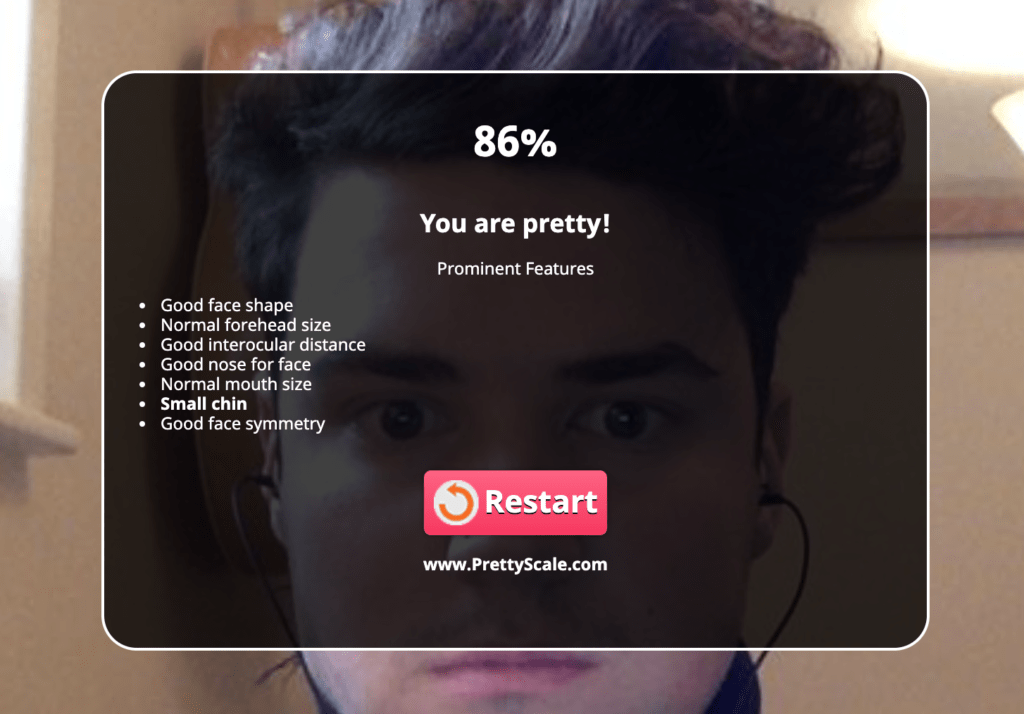The concept of beauty has always intrigued humanity, leading to various interpretations and assessments over time. One such intriguing method is the “pretty scale test,” a subjective yet fascinating approach to evaluating physical appearance. This test not only reflects individual perceptions of beauty but also opens a dialogue about societal standards and cultural influences that shape our views. By analyzing the parameters of the pretty scale test, we embark on a journey that explores the nuances of attractiveness and self-esteem.
In a world saturated with images and ideals, the pretty scale test serves as an informal gauge to measure one’s appeal based on personal or societal standards. However, itâs essential to note that beauty is highly subjective, and what one person finds attractive may differ vastly from another’s perspective. This variability invites a deeper conversation about the criteria we use to define beauty and how these standards can evolve over time.
As we navigate through this exploration of the pretty scale test, we will delve into its origins, applications, and the psychological implications associated with it. Moreover, we will consider how this test reflects broader cultural narratives and the importance of embracing diversity in beauty standards. Join us as we dissect the pretty scale test and its significance in contemporary society.
What is the Pretty Scale Test?
The pretty scale test is an informal assessment tool used to evaluate physical attractiveness based on various criteria. Often, this test is more whimsical than scientific, relying on personal opinions and societal norms. It’s essential to recognize that the test is subjective, meaning the results can vary widely from person to person.
How is the Pretty Scale Test Conducted?
While there isn’t a standardized method for conducting the pretty scale test, it typically involves a series of questions or criteria focusing on physical traits. Here are some common factors considered:
- Facial symmetry
- Skin clarity and complexion
- Hair quality and style
- Body shape and proportions
- Overall grooming and presentation
These factors can be rated on a scale, allowing individuals to gauge their attractiveness against perceived societal standards.
Why Do People Use the Pretty Scale Test?
People might engage in the pretty scale test for various reasons, including:
- To boost self-esteem by receiving validation.
- To compare themselves with peers or societal standards.
- For entertainment and social interaction.
Regardless of the motivation, the test often reveals deeper insights into personal and collective perceptions of beauty.
Does the Pretty Scale Test Affect Self-Esteem?
The pretty scale test can have significant implications for self-esteem. For some, receiving high scores may bolster confidence, while others may feel disheartened if they perceive themselves as falling short of societal ideals. This dichotomy highlights the influence of external validation on self-worth.
Are There Psychological Implications of the Pretty Scale Test?
Engaging in the pretty scale test can lead to various psychological outcomes:
- Increased anxiety about appearance.
- Comparison with others, leading to feelings of inadequacy.
- Potential body image issues.
Understanding these implications is crucial to navigate the complex relationship between beauty standards and mental health.
How Can We Foster a Healthy Perspective on Beauty?
To cultivate a healthier approach to beauty, consider the following strategies:
- Embrace diversity in beauty standards.
- Focus on inner qualities and personal growth.
- Challenge societal norms and promote body positivity.
By fostering a more inclusive understanding of beauty, we can mitigate the negative effects of the pretty scale test and celebrate individuality.
Conclusion: The Future of the Pretty Scale Test
As we reflect on the pretty scale test, it’s evident that beauty is a multifaceted concept influenced by personal, cultural, and societal factors. While the test can provide a fun and engaging way to discuss attractiveness, it’s vital to approach it with a critical mindset. By recognizing the subjectivity of beauty and embracing diversity, we can foster a healthier dialogue about self-image and confidence.
In conclusion, the pretty scale test serves as a reminder of the complexities surrounding beauty standards. Whether we view it as a lighthearted exercise or a serious evaluation, it ultimately leads us to question and redefine our understanding of what it means to be “pretty” in a world that is constantly evolving.
Unveiling The Allure Of Cheri Cheri Lady
Unveiling The Enigma: Cleopatra Morgan Dog
Discovering The Journey Of Matt And Abby: A Tale Of Love And Adventure



ncG1vNJzZmickaG8s7GNppxnrZtkwq%2BwxKuqrZmembavs4ytn55loKeytcDYZqqcmZyaerWx0q1kmmWTp7KiwMivnGaolafAsbHCraCvnV6dwa64